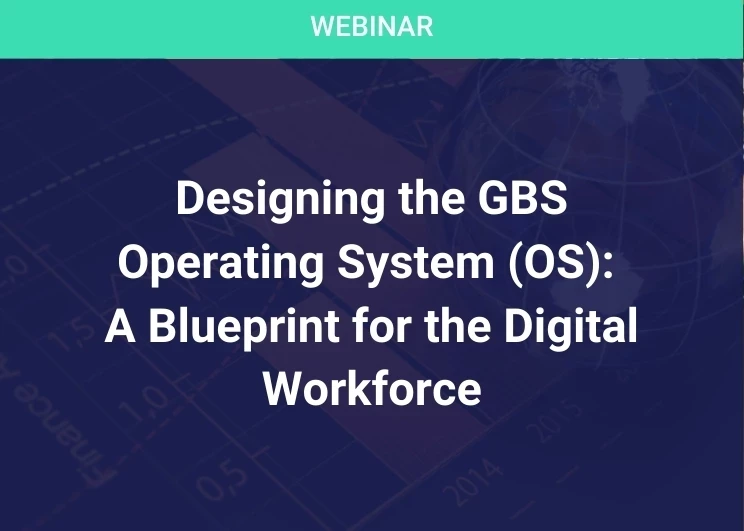Top Ten Tips for Optimal System Implementation
Add bookmarkUnless you’re the world’s most dedicated Luddite, you’re likely to be pretty enthusiastic about the ability of technology to transform your business for the better. In shared services in particular, IT has an almost magical capacity to improve efficiency and effectiveness - and to do so across wide swathes of the organization, freeing up huge sums to go back into the business and generally improving life no end.
However, before you can attain the Nirvana of process perfection it’s necessary to go through the altogether less enlightened state of actually implementing the technology in the first place. And as many of you can testify, that’s not necessarily just a piece of cake: many’s the gray hair that’s manifested itself as a result of putting a new system in place - only to be torn out at the root during yet another round of "improvements" (i.e., making right all the cock-ups of the initial implementation.)
However, help is at hand. In order to preserve the wits - and hair - of network members looking to put new technology in place, SSON has asked a few experts for their advice on the things that can make the difference between the smoothest implementation and the roughest of rides. So if you’re looking down the barrel of new technology and worried you might be in for a difficult time, fear not: just get stuck straight in to SSON’s Top Ten Tips for Optimal System Implementation…
1. Keep focused
No matter what area of business you’re in, the implementation of a new system opens up whole new galaxies of possibilities - at least, in the minds of those who’re going to be using it. It’s incredible how easily "scope creep" can kick in: you might start off just aiming to centralize and systematize payroll, but once the team gets its heads together and looks at all the possible added extras, within a matter of moments you might be looking at a company-wide HR transformation project (this kind of issue can be particularly problematic with solutions developed in-house where keeping reins on the imaginations of the developers can feel like a full-time role). Remember what your objectives are for this system implementation and stick to your path; if useful doors open up along the way showing new opportunities, all well and good, but make sure you get where you want to go rather than getting lost in wonderland.
"Keep a tight well defined scope," urges Philip King of Atos Consulting. "This is where most systems implementations founder; don’t try to bite off more that you can chew; start small and extend in later phases if desired; for example in a new HR system many will start with basic data and administration functions before moving into more advanced services."
2.Optimize from the beginning
The old adage "a stitch in time saves nine" applies just as effectively, if not quite as literally, to systems implementation as it ever did to knitting - especially if you’re designing your own system. Remember how far this system is going to penetrate into your operations, how many people (perhaps across many different business areas) will be using it, and how many other systems it has to interact with in one way or another: it’s up to you as the one in charge of the project to make sure every last ‘t’ is crossed and ‘i’ is dotted in terms of compatibility, flexibility, efficiency, effectiveness, accessibility and a whole lot else. Putting a system in place that then needs constant fiddling and reworking for the next five years to make sure it doesn’t throw obstructions in the way of existing processes is a quick route to deep hot water: you’re not going to get it exactly right at go-live but if you’ve tried to optimize on an end-to-end basis - or as far down towards each end as is realistic - from the beginning, you’ll have done yourself and the system’s operators one massive favor.
"In your design of new systems, you should take into consideration also all aspects of the infrastructure to make the operation of the system smooth and adequate to the user’s expectations after the ending of the project," says PBI’s CIO, Rafael Carrasco Vidana. "Whether it be a payroll system to pay to 15,000 policemen, an ERP, or a banking system, besides user requirements for the system, careful considerations about availability, security, capacity planning, serviceability, regulations compliance, ITIL disciplines, etc, need to be considered. It is not so strange to see new systems with bottlenecks that prevent customers from receiving the expected service levels. Then optimization begins (things not taken into account before), but additional phases, redesign, resources, upgrades - time and money - have to be added."
3. Get the buy-in
It’s been said before, and it’ll be said again: whatever the project, getting it running smoothly is a heck of a lot easier if you’ve got support from the movers and shakers towards the pinnacle of your organization. It’s all the more important when it comes to system implementation because of the sheer scope of the transformation which might apply to so many different individual fiefdoms. Even if what you’re doing isn’t the slightest threat to John Doe down the hall in Room 102, he might still get shirty about having to lose "his" staff for a couple of days’ training when he’s already looking like he might miss his quarterly target. Well, watch him wind his neck in when he realizes this project’s got the green light from on high…
"Obtain and maintain sponsorship," recommends Philip King. "A new system will bring changes to ways of working. It will require budget and sustained allocation of resources. The project may come into conflict with other business priorities. Key decisions will need to be made on timing, scope, resources, and cost. So strong and sustained governance is imperative."
(For a few handy guidelines on how exactly to ensure that critical sponsorship, why not check out SSON’s own "Top Ten Tips for Ensuring Buy-In from the Top" )
4. Take time getting the right team for the job
You might have the best people in the world working for you - but right now they’re the best people in the world at doing Task A and, at the very least, this implementation’s going to change that into Task A 1.2, if not Task B. Furthermore, and more importantly, the team you have are going to be running the system you’re implementing - not implementing it themselves, or at least not by themselves. Putting in new technology - especially a big system - requires specifically skilled talent, and it’s almost certain that you’re going to go outside your team, if not outside the company, to get that talent. So put the time in: this implementation team may be temporary but that doesn’t make these folks any less important, or getting the makeup of the team right any less critical. After all: they’re the ones doing the work…
"Employ good people - both staff and consultants - not only technically competent, but people with ambition. Nurture these people!" advises Paul Hopkins of HE-Shared Services Ltd, whose team won a British Computer Society Medal for a transformational system project. "Learn to trust and back your project team. Management set the goal but then trust your team to find the best way of achieving the objective."
5. Don’t forget your users
OK, so their task’s about to change from A to B - but unless along with your implementation you’re going to effect a wholesale clearing-out of your staff, your current team’s going to be responsible for keeping things going smoothly after the big go-live. So keep them part and parcel of the implementation process (especially if you’re putting in a homegrown system or even an externally provided one which allows for any great degree of flexibility and adaptability). Get as much feedback along the way as is feasible on key factors like ease of use (although do also bear in mind point 6 below…), and also get your team to give their thoughts on, for example, where they think possible bottlenecks might occur and how to avoid them.
"Involve users throughout," says Philip King. "It’s almost invariably the case that users are asked to support ‘user acceptance testing‘. However often this is the first time they have seen the new system. So all manner of problems can be revealed too late. It’s better to involve the users early; many systems today are pre-configured with standard processes; so users can be involved ‘hands on’ in the design stages."
6. Beauty is not truth
What a system does, and how it does it, is immeasurably more important than what it looks like while it’s doing it. Some developers spend many thousands of man-hours making sure they’ve got the sexiest-looking kit on the block - which is fine as long as the real time’s gone into ensuring that their kit is number-one operationally as well. If you’ve got something which looks like a pig but runs like a thoroughbred, you’re winning: in this analogy you’re in a race, not a beauty contest. You want another analogy? OK: just as with automobiles, business technology has the ability to entice and delight through looks and feel - but as any true car-lover will agree, if you’re trying to be first away from the lights, what’s beneath the hood is what it’s really all about…
Philip King agrees: "Don’t be seduced by systems functionality or ‘look and feel. I saw a classic example where the user community liked the look of a new workflow system – the screens were easier to use and more modern – and so they persuaded the IT department to implement functionality that was already provided by the core ERP, resulting in an architecture that in the end did not work and led to a worse business process than before the project started. What was implemented was what looked nice rather than what was effective. It all had to be unravelled in the end!
7. The schedule is golden - (but be flexible when you‘re drawing it up…)
Close to the beginning of your project, a rough timeline for all the various steps you need to take to implement this business-saving system is going to have to become a pretty rigid schedule - especially if you’re working on a multiphase behemoth of a project involving teams in multiple locations (and even - gulp - multiple time zones). Now, flexibility is clearly at least one of the keys to success in business - but when it comes to coordinating this big beast of a project your team always needs to be aware that there’s a specific order in which a lot of things need to take place to avoid the kind of problems that’ll have you pulling your hair out - and theirs - down the line. It’s just common-sense project management. At the same time, though, if you’re dealing with something entirely new (for example, a unique in-house system) you’d be foolish not to make allowances for a bit of trial and error when it comes to putting that schedule together in the first place… right?
"Develop flexible but tight plans," says Paul Hopkins. "Set the goal and the route, but beware detailed planning when things have never been done before. Put all your ‘project slack’ at the END of the project – not at the start!"
8. The budget’s also golden (and black’s better than red)
Similarly to (and very much interconnected with) your schedule, your implementation budget can be a work of great scope and scale, but requires both flexibility within it and adhesion to it by all concerned. There’s no need to look at very-worst-case scenarios (like running out of money altogether) to appreciate the possible pitfalls of not getting the financial planning right. Costs for system implementation don’t stop at the technology acquisition or development stage; in fact, assessing the true cost of implementing even a basic system can be a staggeringly complex and onerous task once all factors are accounted for. Woe betide the implementation head who leaves training or troubleshooting out of his or her calculations, for example, let alone the cost of upgrading, say, a few long-forgotten company laptops that suddenly come out into the arena. The bottom line is always the bottom line - and nothing can put a dent in it like a badly-budgeted large-scale implementation.
"The main reason why so many projects run over-budget is that the budget is not realistic or is too optimistic," believes Stuart Hearn, director of PlusHR. "New projects are exciting and it can be very tempting to downplay or overlook certain costs in order to gain internal approval. Always add a contingency sum to the budget as projects never run entirely according to plan and some elements will inevitably end up costing more than anticipated, particularly when you are using external suppliers."
9. Communicate, communicate, communicate…
You can have the best system in the world about to go live - and if nobody knows it’s happening, or what they’re supposed to do when it does, you’re about to be looking for a new job. As with any well-run project, communicating where you are with your implementation to all the various stakeholder groups is crucial to ensure optimal response both during and after the implementation itself. This isn’t just courtesy, obviously: critical issues like training and feedback simply can’t be effected properly without good clear communication (and of course at go-live it would be helpful to avoid having an entire workforce staring slack-jawed at their suddenly-unfamiliar screens because nobody thought to tell them in advance of the big change…).
"Focus on the soft stuff," advises Philip King firmly. "There is a natural caution about communicating new systems. Sometimes this is warranted because of workers consultations about the impact, or there is a nervousness that questions will be asked that the project team is not yet able to answer. However, the best communication plans will at least be able to say when more detail is available. If you start early and increase the frequency and detail of communications over time, you will have a much better chance of successful acceptance of the new system, and tolerance of any initial bugs. A new system will require all users to change – so it’s essential to analyze the impact, assess training needs, and carry out timely training and education for all affected parties."
Paul Hopkins agrees: "Communicate all the time - both good and less good news. Staff, suppliers and project team members are intelligent people. Trust them and respect them. A problem shared is a problem halved!"
10. Go all the way
We started by saying "keep focused" - and it’s amazing how quickly that focus can dissipate once the bulk of your implementation is over. Fine, you’ve got in place what you’ve been trying to get in place for the last N days - but that mightn’t actually mean you’ve finished the job. Don’t ever lose track of the fact that although it might not seem thus, implementing this system isn’t your primary task (unless of course you’re a consultant brought in specifically to implement the system in which case: why are you reading this? You know it all already… don’t you?). Your primary task is, to return to one of Rafael Carrasco’s examples, make payroll for 15,000 policemen more efficient and more effective - or centralize accounts receivable, or improve reporting quality, or whatever it is you’re doing that you’ve decided to bring in a new system for. Just because the system is now in place doesn’t mean it’s retirement time (even though it might feel like you deserve it…).
"Ensure your objectives are achieved," says Stuart Hearn. "Many projects stop once the tasks have been completed or the new systems have been implemented, but before the actual project objectives have been achieved. Go back and look at your reasons for doing the project and the specific objectives that were to be met. Have they all been achieved? If not, then the project is not yet complete."





















